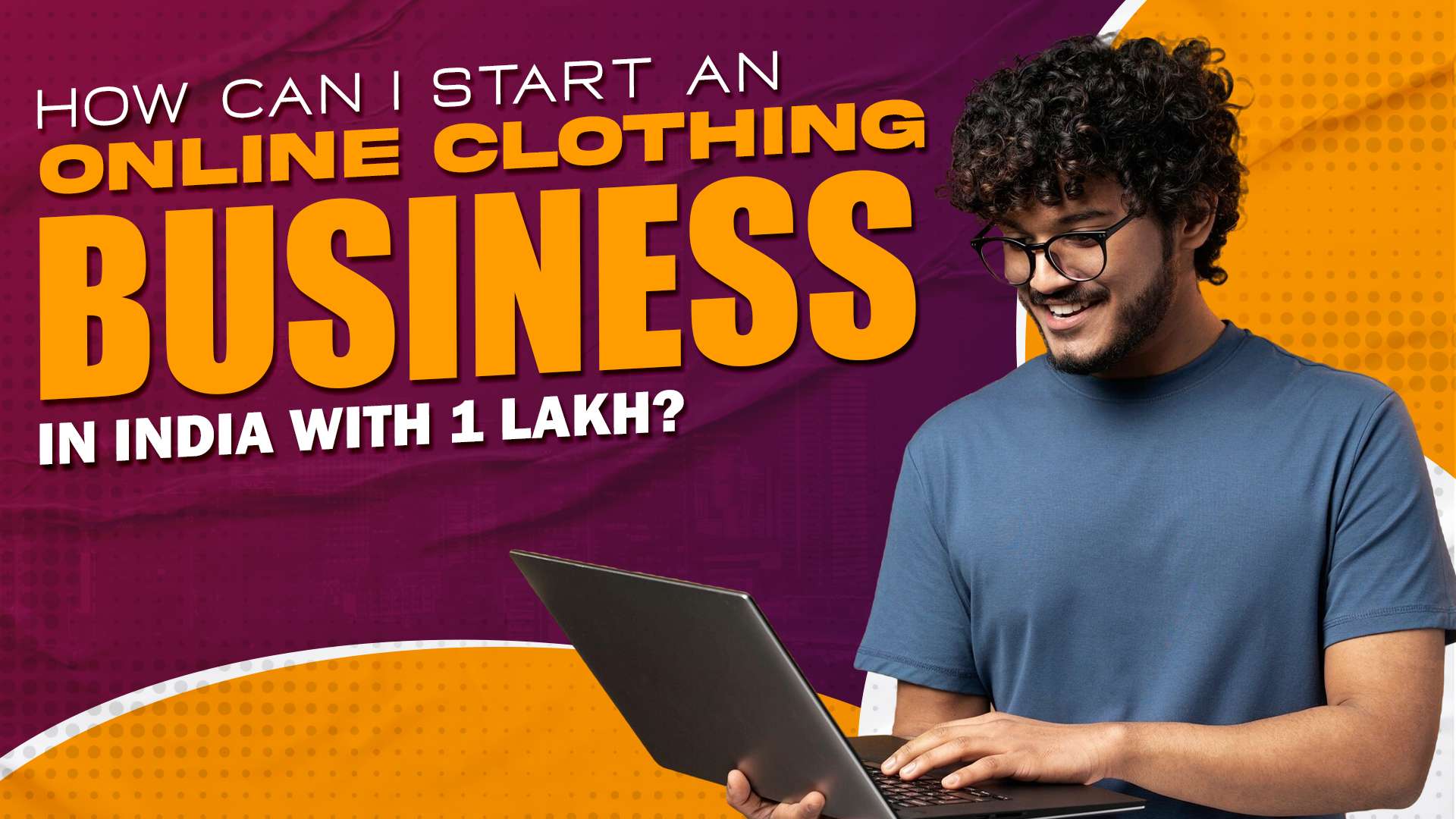Starting An Online Clothing Business Based On Textiles

Share Blog:
India’s textile Saree sector not only has a long history but is also filled with opportunities. Yet, for budding business owners, just thinking about this industry can feel overwhelming. This guide provides distinctly new angles in that perspective: One can start a textile-based online clothing business in India with as low as ₹ 1 lakh. In this article, we will focus on how to make the most out of the rich tapestry of textiles and create a brand in a competitive marketplace.
1. Locate Your Niche in the Textile Tapestry:
The textile tradition practiced in India has a lot of potential. For example, do you wish to limit yourself to selling only the well-known fabrics of a certain part of the country like the Kanjivaram silks from Tamil Nadu or the bandhani of Gujarat? Or do you seek to limit yourself to a certain sort of fiber that would include organic cotton or even linen? In order to narrow down your textile niche, it is important to conduct market research to identify the most sought-after textiles with the target demographics in terms of comfort, occasion, and cultural significance.

2. Research, Plan, and Source Savvy
When the funds are considerably small, then planning is the most vital. To minimize your chances of making losses, you will need to conduct market research to find out what gaps already exist in the online clothing market that fit what you are looking to sell. Look into already existing brands and trends that are on the current rise while also scanning for any suppliers of the products in the near future.
-
Direct Sourcing: It would be useful to check out the wholesale cloth markets in textile hubs such as Surat or Jaipur resulting in remnant sales or discounted fabrics. Connecting with region weavers or textile baking manufacturers will be helpful in meeting unique textile requirements at comparatively lesser cost in future.
-
Online Marketplaces: You can also seek out websites that help firms to source textile suppliers. Check out for certain sites that offer minimum order quantities (MOQs) which facilitate spending most cost-effective. This is ideal for sample introduction of a range of fabrics before mass production commences.
3. Quality Control: The Foundation of Trust:
There is an absolute need to look into fabric quality control procedures irrespective of the budget constraints. Prior to buying the fabric, check for any form of damage such as abrasion, uneven color or poorly woven fabric or torn pieces of fabric. When you enlist a supplier, discuss and set the quality norms for any fabrics you ship to them and random quality inspection for shipped fabrics.
4. Design with Fabric at the Forefront:
Assuming that you may have already selected the fabrics and tailoring styles, your designs must stand out highlighting the features of your fabrics. An example will be free flowing dresses for lighter textiles like chiffon or georgette while structure styles will suit khadi or jute fabrics.

For Franchisee Inquiry, Call: +9163521 77288
Budget Friendly Designing Choices:
-
Simple Cuts: There are some perennial cuts such as A cuts of dresses, straight kurtas, and sometimes shirts which do not require extra designs as they deserve pure and spectacular fabrics.
-
Vintage Fabric Incorporation: Get some vintage fabric and use them to design your clothing, it makes the clothes look different and goes towards waste reduction.
-
Get in Touch with Fashion Designers: If you can not do the designing, then fashion freelance designers who do a certain type of work focusing on particular fabrics may be of help.
5. Find A Partner For The Work Or Do It Yourself:
This one is important. Should you choose to produce it yourself? In this case, some sewing skills and time can come in handy. Buy a basic sewing machine and threads of good quality. However with a modest budget it might be a better idea to contract the sewing out with some local tailors or small clothing manufacturers who has worked with the fabric before.Negotiate prices and clarify your standards.
The Ajmera Fashion Advantage: For the Love of Textiles:
At Ajmera Fashion, we dare to protect Indian textile history. Here are some other suggestions for your journey:
-
Approach Textiles Artisans: Weavers, dyers and other textile artisans can help you with traditional techniques and unique fabrics to complement one another, so you might want to reach out to them.
-
Promote Your Brand: Tell your clients the inspiration behind the textiles you are promoting on your website and your pages in social networks. It increases the loyalty of customers and adds value to the brand.
-
Be Eco-friendly: Use fabrics such as organic cotton or recycled polyester. This trend meets the expectations of clients and makes your brand image more responsible.
-
Take note, It’s always an adventure to build a business. Focusing on a clearly defined textile niche, putting the highest emphasis on the quality of the products you manufacture, and devising a brand story around the fabrics you select are more than enough to successfully run an online clothing store in India with minimal investment.

For Wholsale Inquiry, Call: +916358907210
Also read: Why is Clothing Franchise Business Popular In India.
Frequently Asked Questions about Textiles & Clothing Business:
Q: Is it possible to establish an online clothing business in India with a budget of ₹1 lakh?
A: Definitely, it is possible to begin an online business on a low budget. The main objectives at this stage should be identifying the target niche, effective sourcing, and promoting the clothing business. Further expansion will require reinvesting additional profit earned.
Q: Why is India recognized as a key country when it comes to making a textile-centered business?
A: India is home to various types of textile fabrics, therefore a brand owner can cater to a type of fabric resource that fabricates high-quality products that are unique and that stand out.
Q: Which documents are crucial or legal for those aspiring to set up an online clothing business in India?
A: You will first need to register a business entity profile which can be their sole proprietorship, a partnership, an LLP and many more, then proceed to get a GST registration in case the required annual turnover (applicable) is high and lastly follow other registered requirements for a business to operate online.
Q: Which online platform is best suited for selling clothes in terms of reliability?
A: Check if the platform is user-friendly, has competitive transaction costs to suit your budget; availability of effective marketing strategies; efficient customer assistance; and ease in payment collection and shipping. If you are not certain, consider trying Shopify, Wix, or Instamojo.

For Franchisee Enquiry, Call: +9163521 77288
Also Read...





